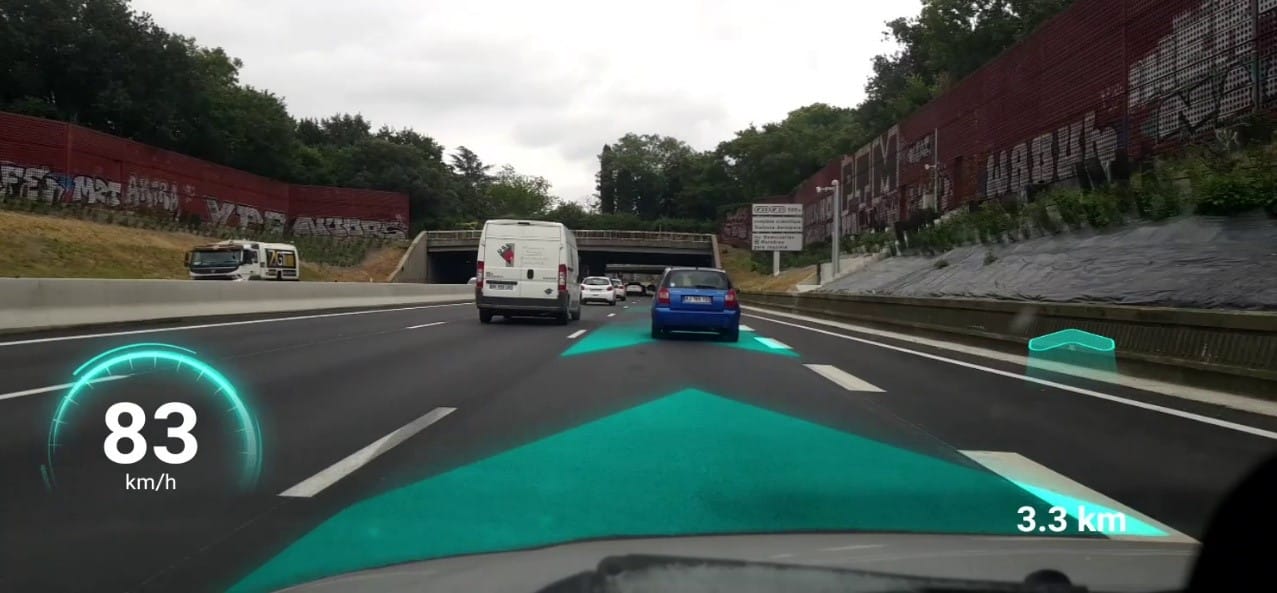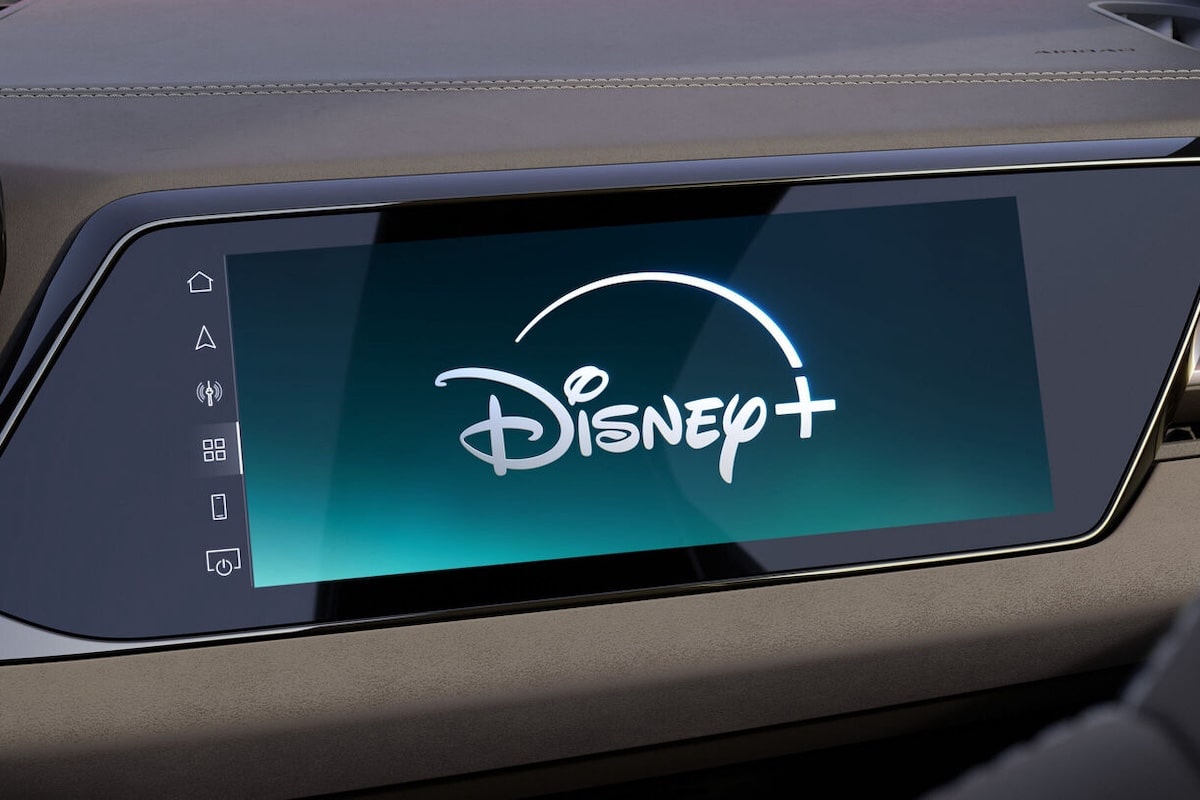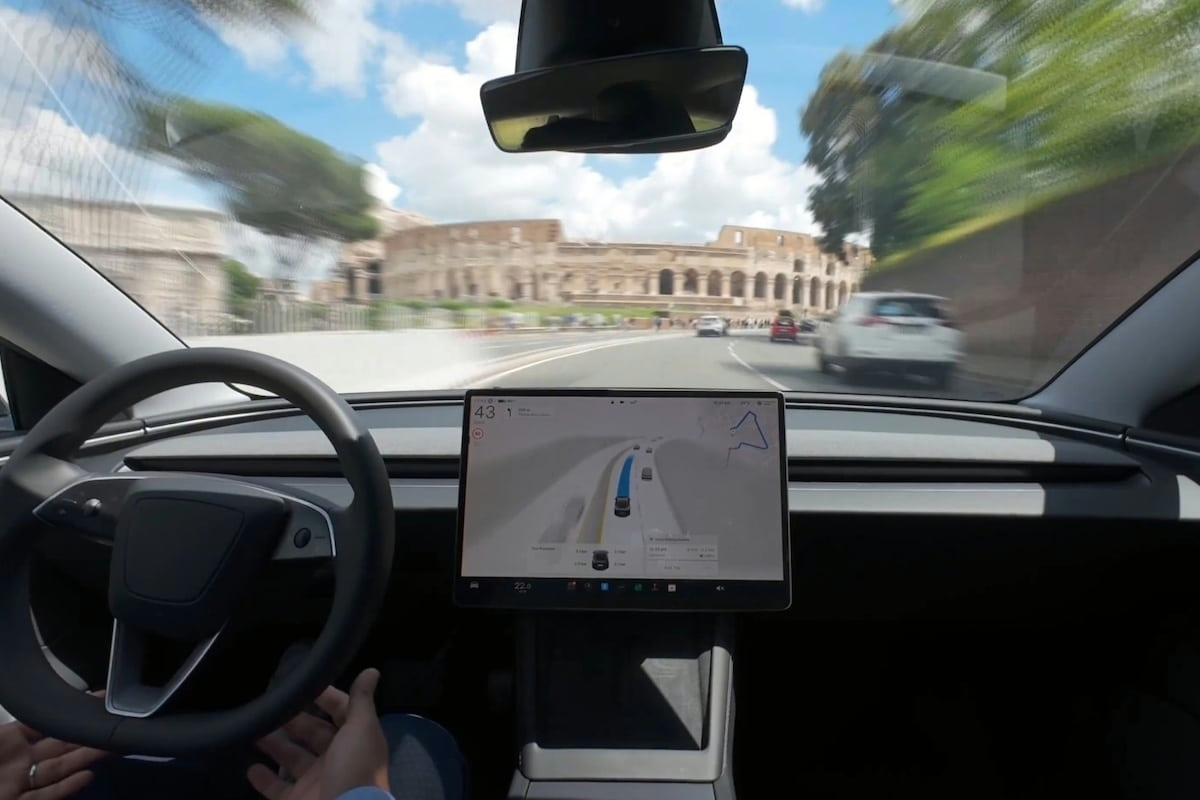How does the EyeLights augmented reality windshield work?

EyeLights startup has introduced an augmented reality windshield that precisely overlays information in the driver’s view.
Back from CES, the international innovation show where they organized demonstrations aboard a modified car, EyeLights explains to Mobiwisy how its augmented reality windshield works.
The Toulouse-based startup already markets the EyeRide Head Up Display, a device that is attached inside a helmet to provide a head-up display for motorcycles or scooters. Similar to Google Glass, this device projects driving data such as speed or navigation into a corner of the field of view.
Two years later, EyeLights presents an augmented reality windshield for cars that displays information overlaying the road at an unprecedented scale. Head-up displays have been installed in some vehicles for years, growing each year, and some now include augmented reality features, but they still only cover a fraction of the driver’s field of view.
What is an augmented reality windshield?
EyeLights’ solution leverages almost the entire surface of the windshield. It displays the projected trajectory, aligned with the road, much like in a video game, rather than just a symbol with a countdown at the bottom of the field of view. Most importantly, it can distinguish potential hazards (cyclists, pedestrians, etc.) instead of simply displaying an alert that briefly diverts the driver’s gaze.
The display area is large enough to show the equivalent of the instrument cluster beneath the windshield (speed, range, and other gauges and warning lights), with information and entertainment in the center, for both driver and passengers. This giant virtual screen could potentially replace all other screens in a vehicle.
How does EyeLights’ windshield work?
At first glance, one might think that EyeLights uses a transparent screen. However, the company has actually pushed beyond the traditional HUD principle, which typically relies on a reflected screen on the windshield itself.
To achieve this, they partnered with AGC Glass Europe to develop a windshield with a special coating, different from the usual electrostatic film, compatible with polarized glasses. AGC Glass Europe is a subsidiary of the Japanese company Asahi Glass, a glass manufacturer that produces a quarter of the world’s windshields.
They then added multiple screens installed flat above the dashboard, increased their brightness tenfold, and mounted stereoscopic cameras at the top of the windshield to align the projections with the driver’s view.
Available in 2 to 3 years?
EyeLights and AGC Glass Europe assert that their technology is no longer a prototype and is ready for industrialization. The startup has reportedly already begun testing with Renault. They hope their solution will be installed in a production vehicle within the next 2 to 3 years.
Read also: Here are the innovations that will change your in-car experience
This page is translated from the original post "Comment fonctionne le parebrise à réalité augmentée d’EyeLights" in French.
We also suggestthese articles:
Also read






